Silver Queen

Brief Synopsis
Cast & Crew
Lloyd Bacon
George Brent
Priscilla Lane
Bruce Cabot
Lynne Overman
Eugene Pallette
Film Details
Technical Specs

Synopsis
In New York in 1873, President Ulysses S. Grant announces that the national debt is at three billion dollars. Meanwhile, suave, professional gambler James Kincaid and his valet, Blackie, continue to earn their money at poker. James is invited to a charity ball hosted by investment broker Stephen Adams, and his daughter Coralie, in order to work the gaming tables and raise money for the charity. Although she is engaged to the affluent Gerald Forsythe, Coralie, who has inherited her father's interest in gambling is immediately attracted to James. Before the end of the evening, Stephen urges Gerald to marry Coralie soon, as he is counting on him to provide his daughter with security and respectability. After the ball, Stephen withdraws the deed to his "Gambler's Luck" silver mine in Nevada, and goes to play cards at James's casino. The next morning, the stock market crashes and panic grips Wall Street. Gerald, who works for Stephen, suggests that Stephen sell the silver mine stock, but Stephen has lost the deed in the poker game, and Coralie discovers that her father is broke. After Stephen dies of heart failure, Coralie assures his debtors that she will repay them. Knowing that Stephen lost the deed to James, Gerald asks the gambler to sell him the mine. James is suspicious of Gerald's high offer as Gerald claims the mine is worthless, but, now in love with Coralie, he offers the deed as a wedding gift with Gerald's assurance that only Coralie's name will be on it. James then leaves for a more affluent city. Coralie also leaves New York and asks Gerald not to try and find her until she sends for him. Coralie and her maid, Ruby, travel to San Francisco, where she uses her only talent, poker playing, to earn a living. By 1877, Coralie is a wealthy casino owner, and sends her final payment of $10,000 to Gerald, whom she believes has been repaying her debtors. Unknown to Coralie, Gerald has been putting all the money into running the Gambler's Luck, hoping a rich silver vein will be struck, and now needs another $30,000 to keep it going. When his mother refuses to bail him out, Gerald orders the mine foreman, Carson, to cut expenses. James arrives in San Francisco and is surprised to find that the renowned dealer known as the "Silver Queen," is none other than his beloved Coralie. James is delighted to learn that Coralie never married Gerald, whom she has not seen in years, and he and Coralie fall in love again. When Coralie's uncle Hector arrives at the hotel, clearly impoverished, James is puzzled that he was never repaid for his losses. When no one appears to know what became of the mine, James gives Hector some money and Coralie's address, with a note informing her that he has gone to Nevada City to investigate the Gambler's Luck. However, Hector is run over by a carriage in the fog, and by the time Coralie gets to see him, he can only say where James went before dying. Coralie becomes despondent, but when Gerald unexpectedly arrives to visit, he claims that Hector lost all his money gambling, and that he purchased the mine from James on her behalf. Gerald urges her to marry him right away, and Coralie, stunned by James's apparent duplicity, consents as long as they can marry in Nevada City, where she was born, and where her father discovered the mine. James, meanwhile, has discovered that Gerald owns the mine, which is rumored to have a rich vein, which prompted Gerald to go to San Francisco to buy up the stock. When Carson and his pal, the sheriff, threaten James, he knows that Gerald is crooked. James confronts Gerald when he and Coralie arrive in Nevada City, and accuses him of wanting to marry Coralie to avoid charges of fraud. Gerald and James get into a furious fistfight, during which Gerald pulls a gun and accidentally shoots Coralie. Gerald is taken away by Blackie, who takes the sheriff's badge, and the doctor finds nothing wrong with Coralie, although she is unconscious. In fact, Coralie collapsed only to prevent further shooting, and when she overhears the truth about Gerald, she revives and pledges her lifelong love to James.

Director

Lloyd Bacon
Cast
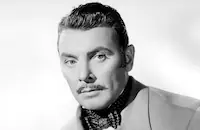
George Brent

Priscilla Lane
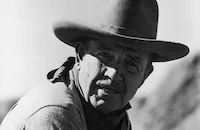
Bruce Cabot
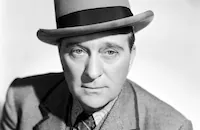
Lynne Overman
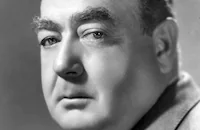
Eugene Pallette

Janet Beecher

Guinn Williams
Eleanor Stewart

Arthur Hunnicutt
Marietta Canty
Spencer Charters
Frederick Burton
Claire Whitney

Cy Kendall
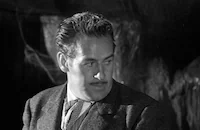
Roy Barcroft
George Renavent
Sam Mcdaniels
Crew
Ralph Berger
Glenn Cook
Jan Grippo
Forrest Halsey
Russell Harlan
Wm. Allen Johnston
Cecile Kramer
Emile Kuri
Carrol Lewis
Frank Melford
Georgette Minieux
Earl Moser
Edward E. Paramore Jr.
Eddie Prinz
Lewis J. Rachmil
Sherman A. Rose
Bernard Schubert
Adrian Scott
Harry Sherman
Harry Sherman
Wanda Tuchock
William Wilmarth
Victor Young

Film Details
Technical Specs

Award Nominations
Best Art Direction
Best Score
Articles
Silver Queen (1942) - Silver Queen
The package deal was perhaps not as generous as it seems. After all, Warners wasn't giving up Michael Curtiz, Bette Davis, and Errol Flynn. This film's stars were decidedly second-stringers at the studio, albeit fairly successful ones, whose services wouldn't be badly missed on the home lot. George Brent, usually seen squiring the likes of Davis or Kay Francis, plays gambler Jim Kincaid. He would not return to Warners until 1946 with My Reputation. Former band singer Priscilla Lane, Brent's at-first reluctant love interest in this story, had enjoyed a pretty good run at Warners since her debut there in Varsity Show (1937), including several movies with John Garfield and a co-starring role in Raoul Walsh's hit James Cagney gangster epic The Roaring Twenties (1939). By this point, however, her career was already starting a downturn. She would only make one more picture under her Warners contract, Arsenic and Old Lace (1944) before retiring from the screen in 1948.
Nevertheless, that Warners was willing to let even Brent, Lane, and Bacon go to such an apparently minor production speaks well of Sherman, known primarily as producer of B Westerns. But one would have to admit they were highly successful ones. Sherman had come from a background as an exhibitor beginning in 1914. A year later he was the Western U.S. distributor for D.W. Griffith's Birth of a Nation (1915). He ventured into production when talkies came in, going out on his own in 1935 with his self-named company. Sherman had his greatest success with a string of more than 50 Hopalong Cassidy pictures. Late in his career he made some more prestigious Westerns with Joel McCrea, including Buffalo Bill (1944) and Four Faces West (1948). Sherman died in 1952 at the age of 67.
Much of the success of Sherman's films can be attributed to production personnel with whom he had forged a long-standing working relationship, among them editor Sherman A. Rose, who worked with the producer 37 times, eventually moving into television and earning an Emmy for The Big Valley Western series, and art director Ralph Berger (25 Sherman films), whose work on Silver Queen earned him an Academy Award nomination for Best Art Direction-Interior Decoration, Black-and-White (shared with Emile Kuri). Berger's television career also netted him two Emmy Awards. Some of his most significant work in that medium was as supervising art director for I Love Lucy.
Of all Sherman's long-time collaborators, it's Russell Harlan who stands out the most. Harlan started in the film industry as an actor and stuntman. By the 1930s he was working as a camera assistant, moving to lead cinematographer in 1937 when he shot his first Sherman-produced Hopalong Cassidy pictures. His work with the producer helped him hone his craft and gain a high reputation as someone who could make B Westerns look like high-budget features thanks to his choice of majestic mountain ranges, expansive skies, and other beautiful natural backdrops as settings for what would have otherwise been pedestrian action flicks. Not long after Silver Queen, Harlan would really break out into the big time with his work on the superior war drama A Walk in the Sun (1945) and then the big-budget Western Red River (1948) for director Howard Hawks, for whom he would work a total of seven times over a period of 16 years, including Harlan's Oscar®-nominated work on The Big Sky (1952) and Hatari! (1962). Hawks considered Harlan one of his favorite cinematographers, frequently praising him for his skills and high standards. Harlan received a total of six Academy Award nominations in both black-and-white and color, including To Kill a Mockingbird (1962) and Hawaii (1966). Curiously, he is credited on this film only as "photographer," even though in Sherman's release only a month earlier, the Hopalong Cassidy picture Undercover Man (1942), Harlan was listed as "director of photography."
In addition to Harlan's nod for this film, the Academy also nominated Victor Young's score. A prolific composer and arranger, Young worked on more than 300 film scores over a period of 20 years, earning 22 Oscar® nominations and one win, for Around the World in Eighty Days (1956). Director: Lloyd Bacon
Producer: Harry Sherman
Screenplay: Cecile Kramer, Bernard Schubert; story by Forrest Halsey and William Allen Johnston
Photographer: Russell Harlan
Editing: Sherman A. Rose
Art Direction: Ralph Berger
Original Music: Victor Young
Cast: George Brent (James Kincaid), Priscilla Lane (Coralie Adams), Bruce Cabot (Gerald Forsythe), Lynne Overman (Hector Bailey), Eugene Pallette (Steve Adams)
By Rob Nixon

Silver Queen (1942) - Silver Queen
Quotes
Trivia
Notes
Hollywood Reporter news items reported the following information about this production: Harry Sherman's company borrowed George Brent, Priscilla Lane and director Lloyd Bacon from Warner Bros. Sherman's daughter Teddi was cast in the film, but withdrew due to illness. Franklyn Farnum, Henry Otto, Wilbur Mack and Francis X. Bushman were also cast, but their appearance in the final film has not been confirmed. A Daily Variety production chart lists Katharine Booth in the cast, but she May have been replaced by Eleanor Stewart. The film was nominated for Academy Awards in the categories of Best Interior Decoration (black and white), Emil Kuri; and Best Music (Scoring of a Dramatic or Comedy Picture), Victor Young.














